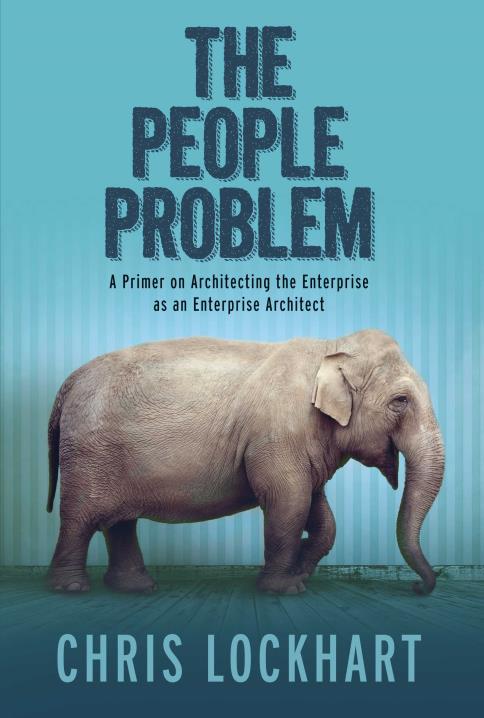You might also title this “Speak softly and carry a reference architecture”
Companies need architecture like the physical world needs architecture. The need for understanding our business is real and is most effectively described by architecture. But companies, unlike the physical world, don’t regularly pay much attention to architecture. They speak of it, but they often don’t do it and when the they do do it, they often don’t do it well.
In my experience, architecture is a difficult thing to do well, predictably and routinely for many companies. At the heart of the matter, many companies don’t really understand the critical value that architecture delivers. This problem is often the fault not of the business itself, but of the architects. They have not done a good job explaining and demonstrating the value architecture brings to the table. Too often the EA-rationale boils down to some sort of speed-to-market or cost-reduction calculation. And yes, those are important. But that’s not the whole story.
Architects should have an elevator-pitch. Maybe that takes the form of well-defined metrics that quantitatively show the positive impact of an EA program in the abstract. Being able to quickly show, at a high level, the benefit an enterprise derives from practicing architecture in a predictable and routine fashion seems like a really good idea for any architect. I won’t bother rehashing what has been said about what metrics to collect and how to collect them. Others have spent many words on the topic. A quick Google search will demonstrate that to you. Suffice it to say when it comes to the elevator pitch wherein the start-up and ongoing operational cost of an EA program are justified, metrics are absolutely critical to sustain program ROI. But again, that’s not the best way to spread the gospel of Enterprise Architecture within a company. So what is? Well, results. Actual results on an actual program. Like, in real life.
What’s the difference between an IT architect and a janitor? If the janitor stops doing his job, someone will notice
Evangelizing the benefit of using reference architectures and solution patterns to project teams comes with the need to back those claims up with hard data. Real metrics on the cost and operational benefits of EA from a project team perspective are necessary and attainable under the right circumstances. Quite apart from describing your abstract benefit as an EA group to the business, there is the need to demonstrate directly to project teams that adopting specific EA methods, artifacts and approaches can actually help them instead of simply tying them up in endless red tape and needless thought experiments. Assuming one has adopted these mechanisms for quantifying the value-add of EA at a project level, there is likely to be an easier sales job whenever a new project comes down the pipeline.
There is a side to this that garners little attention
The reality is that few large enterprises have a properly functioning EA program with metrics that go beyond simply justifying the EA program itself at the abstract, enterprise-wide level. Most programs I’ve seen or heard about are caught up in an endless war of justification for the existence and purpose of enterprise architecture as a concept. It is either that or the program is justified but ignored, sitting in a secret room devising endless slides depicting elegant architectures that no one pays any attention to. There is even the case wherein the program is justified and is part of the project lifecycle, injecting EA wisdom at appropriate checkpoints. When these cases present themselves, it is usually apparent that lip service is at play as everyone nods in solemn agreement at the conceptual model put forth by a project team that is promptly cast aside. EA had its input, but everyone treated it like the annoying Uncle who just HAS to have a say in everyone’s lives. You nod, agree and move on.
What happens if your EA program is stuck in ROI justification hell, being ignored hell or mere lip service hell?
When the demonstrable benefits of using an enterprise approach are self-evident to project teams, magic happens. There is this notion of street cred when it comes to how this stuff operates. I call this the soft power approach. It is very socially intensive. It is people centric. It involves a lot of time spent building relationships with project teams, business owners and segment leaders. It is all about invisible metrics. The project team has all seen the pie charts and Doric column pictures with your goals and ROI measurements depicted, but that isn’t enough. EA has to be marketed and sold to the enterprise via project success, good will and word of mouth. It requires one-on-one relationships with key leaders in key segments. It requires diligent work at successfully injecting EA principles into successful projects and demonstrating to the stakeholders that you have managed to give them an advantage they otherwise would not have had. At a person or small team level, these invisible metrics become apparent to all but the most jaded. Your approach, whether it is a mere design pattern or a whole solution pattern, has contributed to the success of the project.
Realize that success is as powerful a metric as any SmartArt graph in PowerPoint
No, one success will not necessarily help you justify your existence to the entire business in terms of ROI, but it demonstrates to the people on the ground, on specific projects, that EA is not an airy bunch of fluff that gets in the way. This is the soft power of influencing people by acting, by showing them that following your lead will actually help them. It may be messy, but this is about people at the heart of it and people are messy objects. Once you have a couple of successful relationships and a couple of successful projects that are tinted with EA, the good word will spread. I’ve seen this soft power at work in my own roles in very large organizations. It doesn’t take long for people to begin calling you to see if you can help them with their project. For an architect that may or may not be as important to the company as a janitor, what could be more satisfying?


